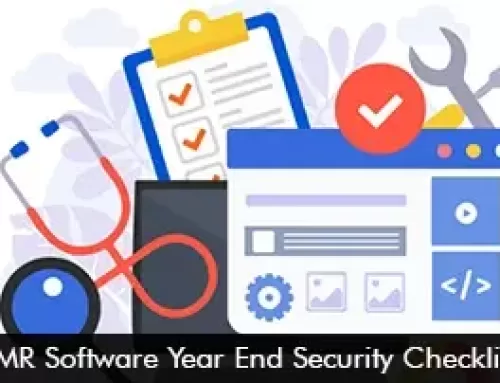In today’s digital healthcare landscape, maintaining patient information privacy is more crucial than ever. With Electronic Medical Records (EMR) Software becoming the norm, ensuring that practices using EMR Software comply with HIPAA rules is a top concern.
In 2025, healthcare providers won’t only need to maintain the security of their systems but also keep pace with evolving privacy threats, cybersecurity issues, and new regulations. Both the companies that make EHR Software and the people who use it need to stay one step ahead to protect patient data and keep everyone’s trust.
Understanding HIPAA Compliance in the Digital Healthcare World
The Health Insurance Portability and Accountability Act, or HIPAA, lays out the national rules for keeping patient information safe and secure. These rules aren’t just suggestions; they’re requirements for any organization that handles patient data, including healthcare providers, insurance companies, and EMR Software vendors.
HIPAA mandates that these organizations put strong protections in place, falling into three main types: administrative (like policies and training), physical (like secure buildings), and technical (like digital security measures).
As we look ahead to 2025, simply having passwords and tracking who logs in isn’t enough anymore. EHR Software vendors like AdvancedMD EMR Software and eClinicalWorks EHR Software come equipped with more robust features by default, such as multi-factor authentication, access controls based on a user’s role, and secure, encrypted ways to share data.
How EMR Software Helps Keep Patient Data Secure and HIPAA-compliant
Modern EHR Software, such as Tebra EMR Software, now comes equipped to handle HIPAA rules, featuring built-in tools specifically designed to protect sensitive electronic health information (ePHI). Key security features include:
- Audit trails that log whenever someone views records, including who looked at them, when, and the reason.
- Automatic time-outs and session locks to prevent unauthorized access if a user steps away.
- End-to-end encryption to keep data safe both when it’s stored and while it’s being sent.
- User permissions and access controls that limit who can see what, reducing unnecessary exposure of patient details.
Beyond these core features, many EMR Systems also provide Business Associate Agreements (BAAs). These agreements legally bind the software vendor to protect patient data. Looking ahead to 2025, vendors are increasingly incorporating AI-powered threat detection. This technology helps spot unusual login attempts or suspicious data access in real-time, adding another crucial layer of defense.
Common HIPAA Mistakes and How to Steer Clear of Them
Even with all the advanced tools we have, HIPAA violations still happen, often simply because of human error. The American Medical Association points out that things like accessing patient records improperly, using unsecured mobile devices, and failing to keep Electronic Medical Records (EMR) Software updated are some of the most frequent causes of HIPAA breaches.
To help lower the risk, healthcare providers should make sure their staff gets regular training on best practices for privacy. It’s also wise to limit who can access data based on their job role and regularly check the activity logs from the EHR Software. Setting up annual HIPAA compliance checks is a smart, proactive move to catch and fix any weak spots early on. Many EMR Systems Vendors now even offer built-in compliance dashboards to help administrators stay ready for audits all the time.
Preparing for the Future of Compliance
With regulations constantly changing, EMR Software needs to keep up. Since there’s more focus on data sharing, like with the TEFCA initiative, we’re seeing a rise in both the amount of health data and how it’s exchanged. This makes sticking to HIPAA rules vital. To tackle this, EHR Software providers in 2025 are beefing up their systems with solutions like blockchain for tracking changes, better cloud security, and automated reports to show compliance.







